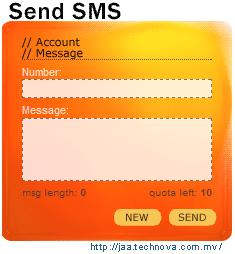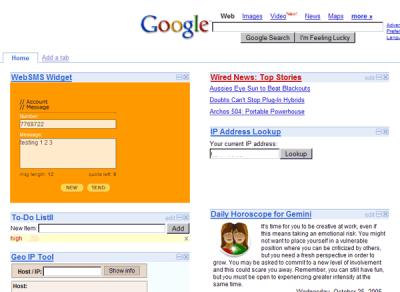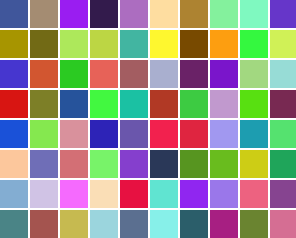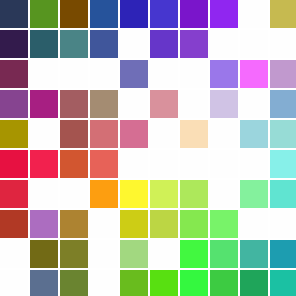Thursday, October 26. 2006
WebSMS for blogs, websites and Google personalised home
Here is something I conjured up in the minutes of freedom after "work" last night. It is what I would call a widget - a WebSMS widget. The idea for the application came after a blog reader by the handle Vayfarer emailed me asking for advice on implementing a "Gadget" for Google personalised home. Anyway, two and a half hours later, I had this baby all wrapped up just as I wanted it.
This "widget" can be added to your blog or website. You will be able to host this widget on your own server when I release the source code, until then you are welcome to use the service based at the Technova server. The widget supports skinning the widget with your own CSS files and so can be made to fit the look of your blog and/or website. I will be releasing the source code for the project soon - right after I flush any major bugs that crops up the coming few days.

I've also made available a "gadget" package for adding the WebSMS widget to the Google "personalised home".
Here is live demo:
Interested in getting one for your blog/website or adding it to your Google homepage? Click here to go to the widget's homepage at Technova.
Have fun.
PS: Other SMS related stuff that I've released previously include, a SMS Sender program which you can run on your Windows/Mac/Linux computer and a WebSMS tool for phpBB forums.
This "widget" can be added to your blog or website. You will be able to host this widget on your own server when I release the source code, until then you are welcome to use the service based at the Technova server. The widget supports skinning the widget with your own CSS files and so can be made to fit the look of your blog and/or website. I will be releasing the source code for the project soon - right after I flush any major bugs that crops up the coming few days.

I've also made available a "gadget" package for adding the WebSMS widget to the Google "personalised home".
Here is live demo:
Interested in getting one for your blog/website or adding it to your Google homepage? Click here to go to the widget's homepage at Technova.
Have fun.
PS: Other SMS related stuff that I've released previously include, a SMS Sender program which you can run on your Windows/Mac/Linux computer and a WebSMS tool for phpBB forums.







